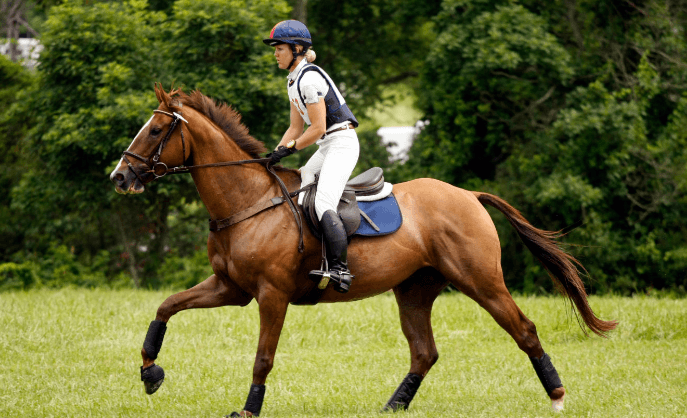How can I train my horse for cross-country riding?

Cross-country riding is a challenging and exhilarating discipline that requires both horse and rider to be in excellent physical condition, possess strong communication, and have the skills to navigate a variety of terrains and obstacles. Training your horse for cross-country riding involves a comprehensive approach, focusing on physical conditioning, skill development, and mental preparation. This article explores the key aspects of training your horse for cross-country riding, providing insights and practical tips to help you succeed in this adventurous equestrian sport.
Introduction to Cross-Country Horse Riding
Cross-country riding is a test of speed, endurance, and agility, taking horse and rider through varied terrains and obstacles. It’s crucial to understand the demands of cross-country riding and why proper training is vital for safety and performance.
Preparing Your Horse for the Journey
Before diving into the specifics of cross-country training, assessing your horse’s current fitness level is essential. A tailored training plan can then be developed, focusing on gradually building your horse’s endurance, strength, and agility.
Basics of Cross-Country Training
Cross-country training begins with the basics: developing your horse’s endurance and strength. This includes varied workouts, from long, slow distances to short, intense exercises, designed to improve cardiovascular health and muscle tone.
Essential Skills for Cross-Country Riding
Key skills such as jumping techniques and navigating varied terrains are critical for cross-country riding. Training should include practice over different types of obstacles and in various settings to simulate the conditions of a cross-country course.
Equipment and Gear for Cross-Country Riding
Selecting the right saddle and protective gear is crucial for the comfort and safety of both horse and rider. This section will guide you through choosing the best equipment for cross-country training and competition.
Nutrition and Health Management
A horse’s diet and health are paramount in cross-country training. This includes tailored dietary plans to support endurance training and regular veterinary check-ups to monitor health and prevent injuries.
Training Schedules and Routines
Creating a balanced training schedule that includes workouts, skill practice, rest, and recovery is vital for effective cross-country training. This section provides tips on designing a comprehensive training routine.
Mental Preparation for Horse and Rider
Cross-country riding is as much a mental challenge as a physical one. Building trust and confidence between horse and rider, along with mental exercises to improve focus, are key components of preparation.
Common Challenges and Solutions
Training for cross-country riding comes with its set of challenges. This part of the article addresses common obstacles in training and strategies to overcome them.
Advanced Cross-Country Riding Techniques
For those looking to compete or tackle more complex courses, mastering advanced techniques and strategies is essential. This includes tips on competitive riding, course strategy, and timing.
Community and Support
Finding a supportive community, whether through a trainer, mentor, or riding club, can provide valuable guidance and encouragement throughout the training process.
Safety Measures for Cross-Country Riding
Safety should always be a top priority. This section covers emergency preparedness and safe riding practices to ensure the well-being of both horse and rider.
Conclusion
Training your horse for cross-country riding is a rewarding journey that strengthens the bond between horse and rider. By focusing on physical conditioning, skill development, and mental preparation, you can prepare for the challenges and joys of cross-country riding. Remember, patience, consistency, and a positive approach are key to successful training and competition.
Faqs
What is the best way to start training for cross-country riding?
The best way to start training for cross-country riding is by first ensuring your horse is in good physical health. Begin with foundational fitness training to build endurance and strength. Incorporate long, slow rides to improve stamina, and gradually introduce your horse to different terrains and obstacles. It’s also important to work on your communication and trust as a team. Starting with groundwork and basic obedience can lay a solid foundation for more complex cross-country skills.
How often should my horse and I train?
The frequency of training depends on your horse’s current fitness level, goals, and how much time you can realistically dedicate to training. A balanced schedule might include 3-4 days of focused training per week, with at least one day reserved for rest. It’s crucial to listen to your horse and adjust the intensity and frequency of training sessions based on their response. Overtraining can lead to injuries and burnout, so ensure your horse has adequate recovery time.
What kind of obstacles will we encounter in cross-country riding?
In cross-country riding, you’ll encounter a variety of natural and man-made obstacles. These can include logs, ditches, water crossings, banks, drops, and combinations of jumps. Each obstacle is designed to test the horse and rider’s ability to navigate different challenges, requiring precision, agility, and confidence. Training should, therefore, include exposure to as many different types of obstacles as possible to prepare for the variety encountered in competitions.
How can I improve my horse’s jumping skills?
Improving your horse’s jumping skills starts with building a solid foundation of trust and communication. Begin with ground poles and small jumps to build confidence and technique. Focus on maintaining a steady rhythm and ensure your horse is responsive to your cues. Gradually increase the complexity and height of the jumps as your horse becomes more comfortable. Incorporating gymnastic exercises can also help improve flexibility, strength, and coordination, essential for successful jumping.
What are the signs of overtraining?
Signs of overtraining in horses include physical and behavioral changes such as increased fatigue, lack of enthusiasm for training, irritability, and resistance to work. Physically, you might notice decreased performance, longer recovery times, weight loss, or an increase in injuries. If you suspect your horse is overtrained, it’s crucial to allow adequate rest and recovery before gradually reintroducing training.





